Cultural Resource - Blog Posts
A short explanation of my layer by layer drawing of Central/Eastern Ukrainian folk attire, for anyone who might be interested.



Hanfu in Components: Structure Conventions (pt2)
navigation: hanfu in components 1 2 3.1 3.2 ...
Thanks for the love on the last post, I’ve been motivated to continue writing LOL Anyway: Construction/sewing pattern/structure is very important to hanfu!
There are a few important structure conventions when it comes to hanfu—almost all traditional-cut hanfu follow these rules; you could call them the defining characteristics of hanfu. There are exceptions to every rule of course (I will go over some caveats at the end of this post), but generally if a hanfu design ignores these rules we might consider it to be ‘incorrect.'
(There will be a longer follow-up pt. 3 post to this explaining the anatomy of a hanfu top/robe, where there will be more detailed in-context illustrations and descriptions. I just figured I should list these ‘rules’ somewhere separately.)
中縫/中缝/zhong1 feng4/Center Seam


Take a look at your shirts. Is there a shoulder seam between the front of the shirt and the back of the shirt? Western clothing tends to consist of a front piece + back piece sewn together to create a space for your body to sit in:

Hanfu doesn’t work like that. Traditionally, the garment isn’t separated into a front piece and back piece: it’s separated into a right piece and left piece, which are joined together at the vertical center seam. Why? Traditional fabric has a narrower width than the standard ~145cm that we have today, so a long, narrow piece is less wasteful to cut out from a bolt of silk than a wide one.

Therefore there is always a center seam, one running vertically down the front and one down the back. 中 = center, 縫 = seam, so 中縫 means center seam. There’ll be a front center seam (前中縫) and a back center seam (後中縫).


不破肩/不破肩/bu2 po4 jian1/No Broken Shoulder
Kind of an addendum onto the previous point? Additionally since the body pieces are separated into left/right rather front/back, there’s no seam at the top of the shoulder here. The fabric is simply draped over the arm/shoulder to hang down, covering the torso on both sides.*


*Caveat: Some modified hanfu that vendors sell today will have a shoulder seam, especially thicker winter garments or short-sleeved garments. This is a design choice made to prevent the fabric from looking too stiff, known as 破肩/破肩/po4 jian1,literally “broken shoulder.” It can look great, lots of hanfu makers do it! But just to be clear, that is a MODIFICATION.
接袖/接袖/jie1 xiu4/Sleeve Connection


Western clothing patterns tend to have something where the fabric of the sleeve gets connected to the fabric of the garment’s body at the shoulder/armpit, often with a concave arm hole shape to help with the contours of the garment when it’s worn.

Hanfu sleeves, on the other hand, are never connected at the armpit—they are connected halfway down the arm. In other words, the piece of fabric that forms the body extends to also cover the upper arm part of the sleeve. The actual sleeve piece is connected to the body at the bicep/elbow area via a flat seam. (In the case of half- or no- sleeve garments there might just not be a separate sleeve piece.)


右衽/右衽/you4 ren4/"Right Over Left" Rule


Applies to cross-collar, some varieties of round collar, and some varieties of standing collar tops. In the case that the front of the garment crosses over itself, the flap coming from the wearer’s left goes OVER the flap coming from the wearer’s right. Easiest way to make sense of this is, if you’re looking at someone wearing a cross-collar hanfu top, the cross will look like a lowercase y.


Caveats
NO RULE EXISTS WITHOUT EXCEPTION!!! These rules exist because a majority of hanfu follow them and they are a standard that people agree on right now. However, there are ALWAYS cases—historically or otherwise—where these rules may be broken. For example, there are several Ming Dynasty cross collar robes that happen to be left over right, and the location of the sleeve seam can differ based on what garment you're looking at.
Also, many modern hanfu manufacturers will deliberately choose to break these 'rules' in favor of aesthetics. This is a purposeful design choice—not one that's done out of ignorance or disrespect. It's easy for common modifications to get mistaken for 'historically accurate.' To be clear, it is 100% okay and super common for modifications to exist! Just don't go around claiming that it was historically that way.
My advice is that if you're starting out with hanfu, try to stick to these rules in the back of your head as closely as possible. Once you've built your foundational knowledge, then you can start exploring the exceptions to the rules. These rules may not be foolproof, but they are a useful tool to help you understand the commonalities and trends within hanfu without overwhelming you.
Last note: it is generally more of a taboo for seams that should exist to not exist in a piece of clothing (i.e. no center back seam) than for extra seams to exist. If you go look in museums for the artifacts that hanfu is based off of, you'll notice that a lot of them—especially the ones from earlier dynasties—are a chaotic patchwork of a bunch of random piece of fabric sewn together to create the garment. Fabric is expensive, people don't want to waste it! So it's not all that weird to have seams in random places.
Happy 除夕 everyone! 有蛇有得 :>
navigation: hanfu in components 1 2 3.1 3.2 ...
look at the republican calendar and see which animal/plant/item is associated with your birthday ok. if you're born january 14 you get the day of the cat
Last time I wondered if Danish vagabonds, also known as Landevejsriddere (country road knights), live by some sort of code because even though they’re usually drunk they’re always very pleasant and friendly and as it turns out, yes they do. LINK

You can’t just put on a festive hat and push a pram with your earthly belongings and call yourself a vagabond in this country. You have to be mentored by an older vagabond and travel along the vagabond routes for two summers and one winter before you get your vagabond name at an annual ceremony at Hjallerup Marked where all new vagabonds are ”baptized”.

They also have an annual ceremony at Egeskov Marked where they vote on who should be their king for a year and help settle conflicts in vagabond society. They give the title to the vagabond who has been the kindest and best behaved all year.

The vagabonds have rules they live by: no lying, no stealing, no fighting and always be polite. If they catch any of their members breaking the rules they beat them up because it’s important to their survival that outsiders can trust them. They make their living by sharpening knives and scissors or doing manual labor like helping you chop wood, clean up your garden or the like.

That’s why if you see a vagabond you know you’re in safe company no matter how drunk they are. Should you come across one support an old tradition full of rituals and kindness by giving them some coins or a sandwich.

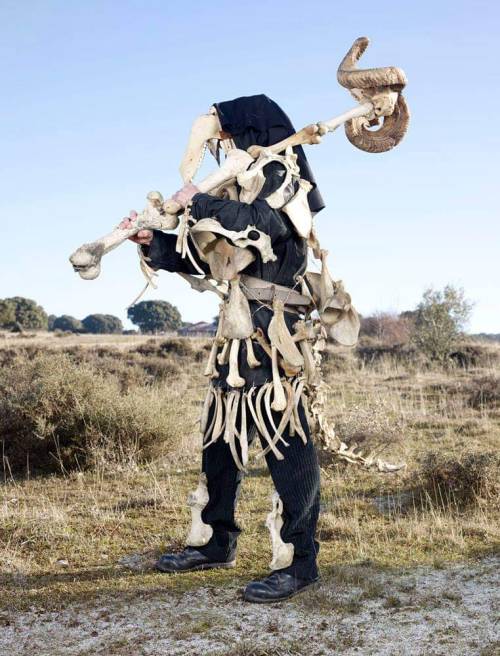
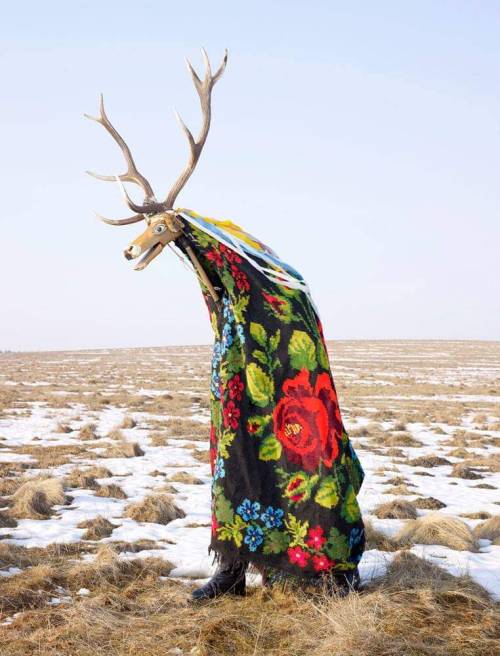
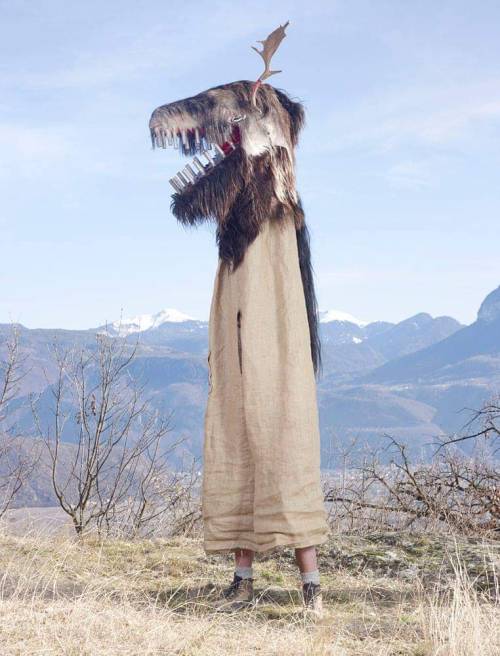



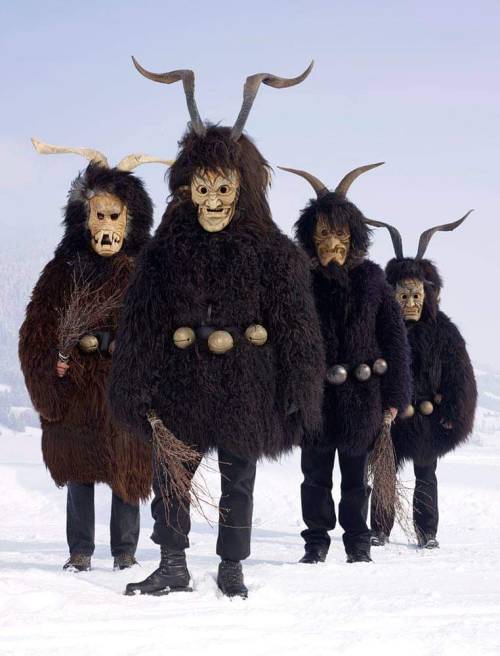
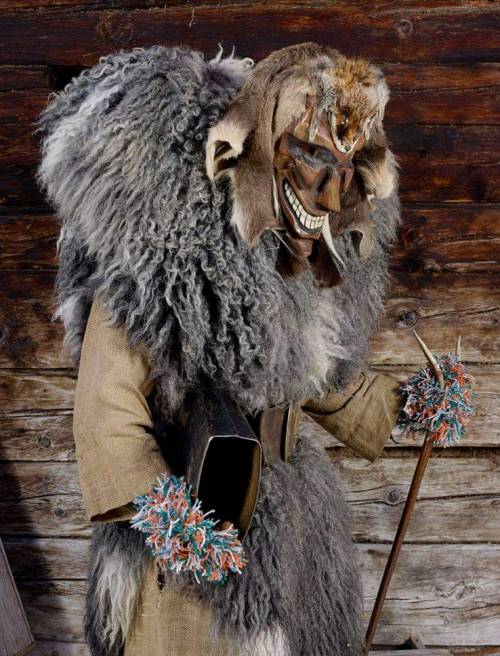


Traditional European Christmas time monsters, photographer across the Europe by Charles Fréger.
I love that RPG race trail rations post, and it got me thinking about non-Eurocentric fantasy trail rations. I focused on Central and South Asian cuisines (as I also needed the information for a project I’m working on). I looked for foods that were easy to carry (dry or dehydrated), easily obtainable in markets/easily foraged, easy to cook/not needing cooking at all, and high in protein/generally filling. Many foods had language-specific names and some overlapped into different regions, so I bare-bones’d the names. This is what I came up with:

Dried curd comes in many forms – kashk, aaruul, quroot, etc. – and was of particular interest to me, since I learned it was used since (and before) medieval times as a trail ration for soldiers and travelers because it is lightweight and high in protein. The more you know. 🌈
Tempeh is one of my favorite food options, but I should note that it originates from Southeastern Asia, Indonesia in particular.
Bamboo is extremely handy for use as both a carrying and cooking vessel, and would save a character the hassle of bringing a skillet with them (provided the character is in an area with large bamboo and a water source). It’s a method still used today because it’s extremely efficient. Storing eggs in rice is a good way to travel with them and keep them from cracking for a short time.
These are just some basics and I’m only scratching the surface, so if anyone has foods to add from these regions (East and Southeast Asia, too!), or any non-European region honestly, don’t hesitate to add them!
TO THOSE MAKING NATIVE OCS
I see this a lot, no one has actual names, or any reference for names, that are legit Native American, varying among the tribes, for their characters.
Babynames.com and shit like that will give you names made up by white people.
However, I’ve got your solution.
Native-Languages is a good website to turn to for knowledge on a lot of native things, including native names. If you’re unsure about the names you’ve picked, they even have a list of made up names here!
Please don’t trust names like babynames.com for native names, they’re made up and often quite offensive to the cultures themselves.
